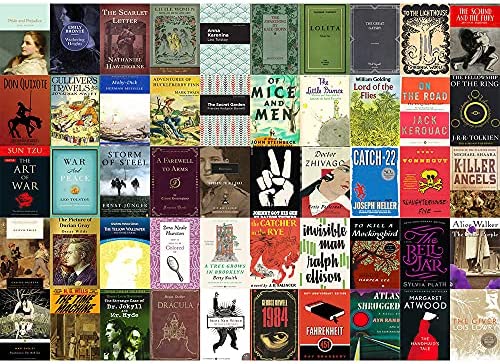Ease Into The Classics
How to get comfortable with complicated literature

November 16, 2022
If you’re just getting into reading, classic literature can be intimidating. The complex words, confusing names, and unfamiliar time periods associated with history’s most revered novels make the jump from “easy reads” to traditional literature a daunting one, but if you find yourself itching for some elegant prose and profound symbolism, take the leap! Here are some tips for easing yourself into the classics:
1. Start Small
Get yourself acquainted with some shorter “classic” texts before diving into dense novels. There are countless short stories, especially from the nineteenth and early twentieth centuries, that have similar language and writing styles to the famous classics without their overwhelming number of pages. Some of my favorites include “Bartleby, The Scrivener” by Henry Melville, “The Yellow Wallpaper” by Charlotte Perkins Gilman, and “The Little Match Girl” by Hans Christian Anderson.
2. Do Your Research
Before picking up your first classic, do some research on the books that will suit your personal preferences. Fans of romance and female heroines, for example, might fancy Jane Austen, while those interested in social/labor issues might prefer a work of Charles Dickens. Once you take your pick, look up the time period and region your book is set in; historical context helps understanding!
3. Use Outside Sources
Don’t be afraid to read a summary or analysis alongside the classic of your choosing. Even if you only use them at the beginning of your reading to keep track of characters and emerging themes, websites such as SparkNotes and LitCharts are resources that can help you get the most out of your book. Try jotting down main points in a journal that you can add to as you start to formulate analysis of your own.
4. Don’t Call it Quits!
If you are struggling to follow the events or characters of a classic when you first start out, don’t give up! Unfamiliar writing styles take some getting used to, and I promise if you stick with it, you’ll be able to breeze through Charlotte Brontë just as easily as you do Colleen Hoover. If you really need to take a break, try watching a movie adaptation of your classic to get a grasp on the plot and then start again!
(My personal recommendations: Emma and Pride and Prejudice by Jane Austen, Little Women by Louisa May Alcott, Wuthering Heights by Emily Brontë, The Great Gatsby by F. Scott Fitzgerald, and Of Mice and Men by John Steinbeck)
